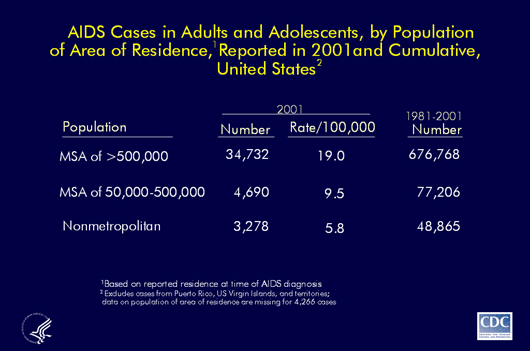|
|
|
|
|
|
||
|
Divisions of HIV/AIDS Prevention |
|||||||
| L206 Series | All Series | Home | Index | Search | Site Map |
HIV/AIDS Surveillance in Urban-Nonurban Areas
L206 slide series through 2001
Slide 2 of 12

|
|
NOTE: To download files "right click" mouse on the link for the file to download, and select "Save Link" or "Save Target".
| L206 Series | All Series | Home | Index | Search | Site Map |
|
AIDS Cases in Adults and Adolescents, by Population of Area of
Residence, Reported in 2001 and Cumulative, United States |
|
Last Updated: March 7, 2003 Centers for Disease Control & Prevention National Center for HIV, STD, and TB Prevention Divisions of HIV/AIDS Prevention Surveillance Branch Contact Us |
